Table of contents
- The Benefits of Storytelling in Advertising
- The Key Elements of a Successful Storytelling Campaign
- The Rise of Digital Storytelling in Advertising
- Types of Storytelling in Advertising
- The Future of Storytelling in Advertising
Advertising is an essential element of the business world, and is a means of promoting products or services to potential customers. Advertising strategy has come a long way from traditional advertising to digital marketing. Storytelling on the other hand is the art of conveying a message through narratives. The two may appear to be different but they share a strong link. Consumers want to be entertained and to connect with brands they trust, which is why storytelling is an effective advertising strategy. The universal concept of storytelling evokes a range of emotions which is why it is necessary to incorporate storytelling with advertising.
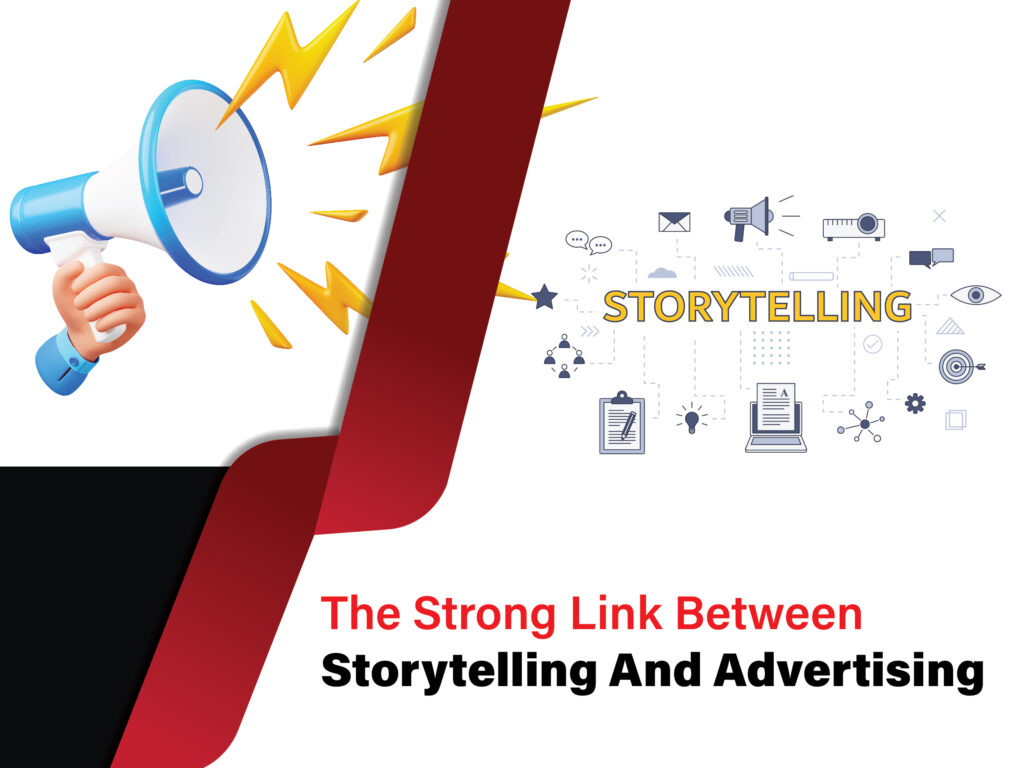
Storytelling in Advertising: The Basics
Storytelling is a powerful tool that’s been used by marketers since the dawn of time. One of the most effective ways to connect with people emotionally is through storytelling, and this is why advertising that involves some form of storytelling is more powerful.
According to a study by Kantar Millward Brown, campaigns that tell a compelling story are more effective than those that rely solely on promoting a product or service. The study further suggested that campaigns that evoke an emotional response in consumers are more likely to be successful.
Today’s advertisers are using storytelling in their advertising campaigns. They’re creating commercials, films, and short stories that are entertaining and engaging. The focus is not on selling a product directly, but on creating shareable content that people can enjoy irrespective of whether they go on to buy the products or not. By weaving a story that’s easy to follow and understand, brands can create an image that consumers can relate to and connect with.
The Benefits of Storytelling in Advertising
There is a myriad of benefits to incorporating storytelling with advertising, some of which include:
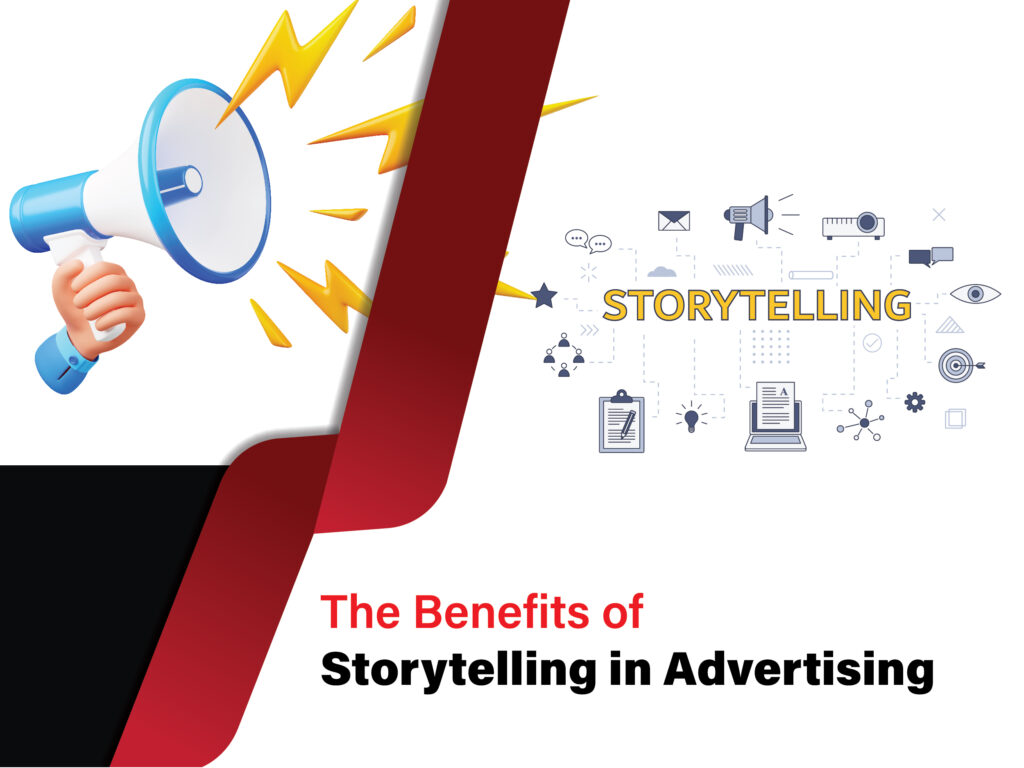
- Emotional Connection: When brands incorporate narratives into their advertising strategies, they allow their audience to connect with them emotionally. It’s easier for consumers to relate to brands that share their values and beliefs, and storytelling allows brands to do just that. An emotional connection is not only more memorable, but it also creates an opportunity for brands to further engage with their audience.
- Versatility: Unlike traditional advertising methods that focus mainly on promotions and sales pitches, storytelling in advertising is more versatile. It allows brands to create content that doesn’t directly push their products, but rather focuses on human experience. Brands can use storytelling to showcase their brand value, explain their purpose, and engage their audience.
- Improved Brand Reputation: Consumers are always on the lookout for brands they can trust, and storytelling is a great way to build that trust. When brands create content that resonates with their audience, it creates a positive image that can go a long way in building a great reputation.
- Entertaining and Engaging: Storytelling in advertising provides an opportunity to create content that’s fun, engaging, and easy to consume. Brands can use humor, dramatic tension, and even empathy to make their content more relatable and enjoyable.
The Key Elements of a Successful Storytelling Campaign
Before we delve into the link between storytelling and advertising, it’s essential to understand what makes storytelling successful. Here are some key elements that every storytelling campaign should have:

- Authenticity: The best stories are those that are authentic and resonate with the audience. Consumers today have become smart and can easily detect when a story is fabricated or when a brand is trying too hard to sell their products through storytelling. Therefore, it’s important to be honest, transparent, and true to the brand’s values while storytelling.
- Engaging: A successful storytelling campaign should be engaging and make the audience feel a part of the story. A brand’s story should grab the audience’s attention from the beginning and keep them hooked until the end. And, this can be achieved through relatable characters, an interesting plot, and memorable visuals.
- Emotional Connection: The most successful storytelling campaigns evoke an emotional connection with the audience. By tapping into the emotions of the audience, brands can connect with them on a deeper level and create a long-lasting impact. The key to creating an emotional connection is to be genuine and to use the right tone and language that resonates with the audience.
- Memorable: One of the primary goals of a storytelling campaign is to create a memorable experience for the audience. By creating an experience that stays with the audience, brands can foster conversations and generate long-term brand loyalty. A memorable story can be achieved through the use of creative visuals, engaging characters, and a unique plot.
The Rise of Digital Storytelling in Advertising
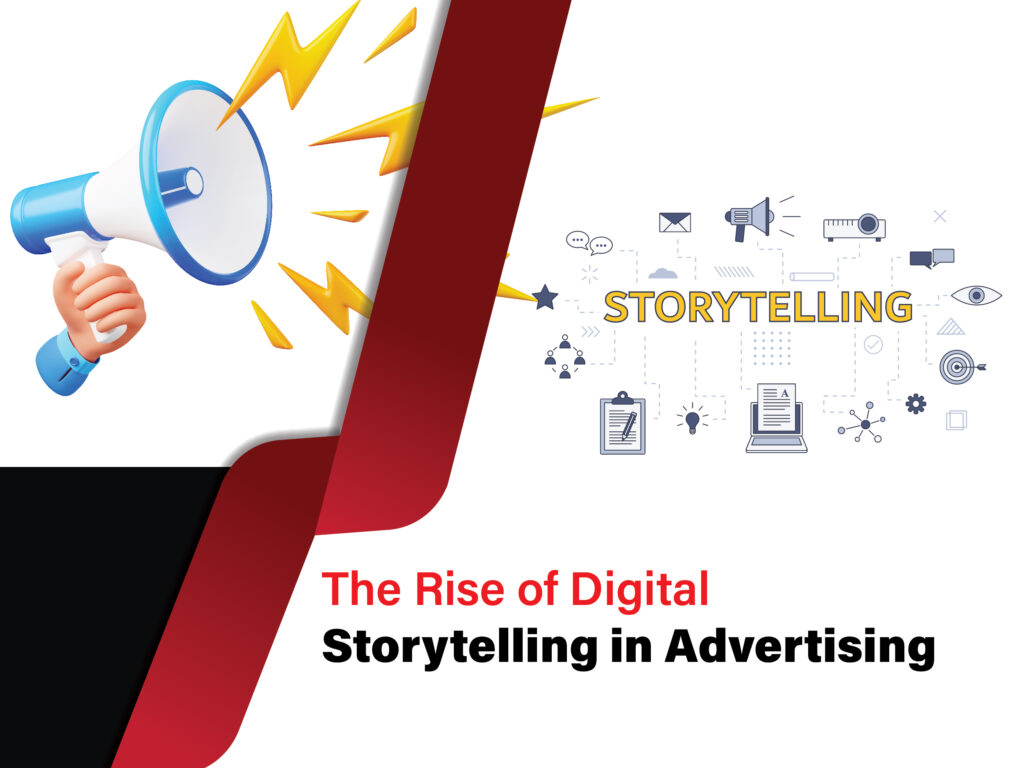
With the rise of digital technology, storytelling has evolved from a traditional form of advertising to a more dynamic and engaging platform. Digital storytelling has enabled brands to connect with their audience in new and exciting ways. Here are some ways in which digital storytelling has altered the advertising landscape:
- Interactive Storytelling: Digital storytelling has allowed brands to take storytelling to the next level by creating interactive experiences for their audience. Through the use of augmented reality, virtual reality, and gamification, brands can create immersive experiences that transport the audience to a different world. This form of storytelling creates a deep connection with the audience and leaves a lasting impression.
- Social Media Storytelling: Social media platforms like Instagram, Facebook, and Twitter have become a new form of storytelling for brands. Brands can now use these platforms to tell their stories in a more personal and relatable way. Social media has enabled brands to connect with their audience in real-time, respond to comments and feedback, and generate user-generated content.
- Video Storytelling: Video has become one of the most powerful mediums for storytelling. Brands can use video to create emotional connections, explain complex concepts, and showcase their products or services in an engaging manner. With the rise of video-sharing platforms like YouTube and TikTok, brands can now reach a wider audience and create viral content.
- Personalized Storytelling: With the help of data analytics, brands can now create personalized storytelling experiences for their audience. By analyzing behavior, preferences, and demographics, brands can create stories that are tailored to the individual’s interests and needs. This form of storytelling creates a deeper connection with the audience and drives higher engagement rates.
Types of Storytelling in Advertising
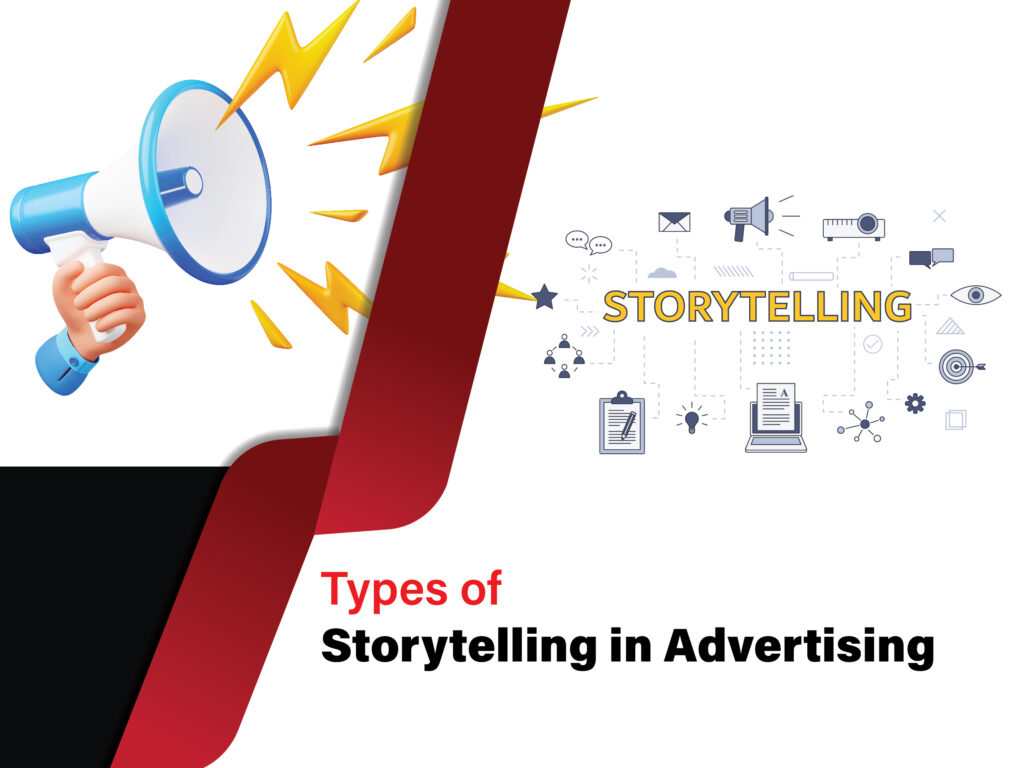
- Narrative Storytelling: Narrative storytelling is the most well-known type of storytelling in advertising. It involves creating a complete story, complete with characters, settings, and plot. It is a powerful way to tell a brand story, evoke emotions, and create a memorable experience. A good example of narrative storytelling is the Apple “Think Different” advertisement campaign in 1997. The campaign featured iconic figures from history, such as Martin Luther King Jr. and Albert Einstein, and included a voice-over by Richard Dreyfuss. It aimed to inspire the audience and position Apple as a revolutionary and innovative company.
- Personal Storytelling: Personal storytelling is a type of storytelling that involves telling personal stories of real people. It is a potent way of creating an emotional connection with the audience. Personal stories can be authentic and relatable, making them an effective way of building rapport with an audience. A good example of personal storytelling in advertising is Dove’s “Real Beauty” campaign. The campaign features real women with diverse body types, ages, and skin colors, celebrating their unique beauty.
- Imaginative Storytelling: Imaginative storytelling involves creating a fictional world with characters, settings, and plots. It is a potent way of creating a memorable experience, evoking emotions, and communicating complex ideas. A good example of imaginative storytelling in advertising is the Coca-Cola “Happiness Factory” campaign. The campaign features a fantastical world inside a vending machine, where bottles of Coke are brought to life to create a festive atmosphere.
The Future of Storytelling in Advertising
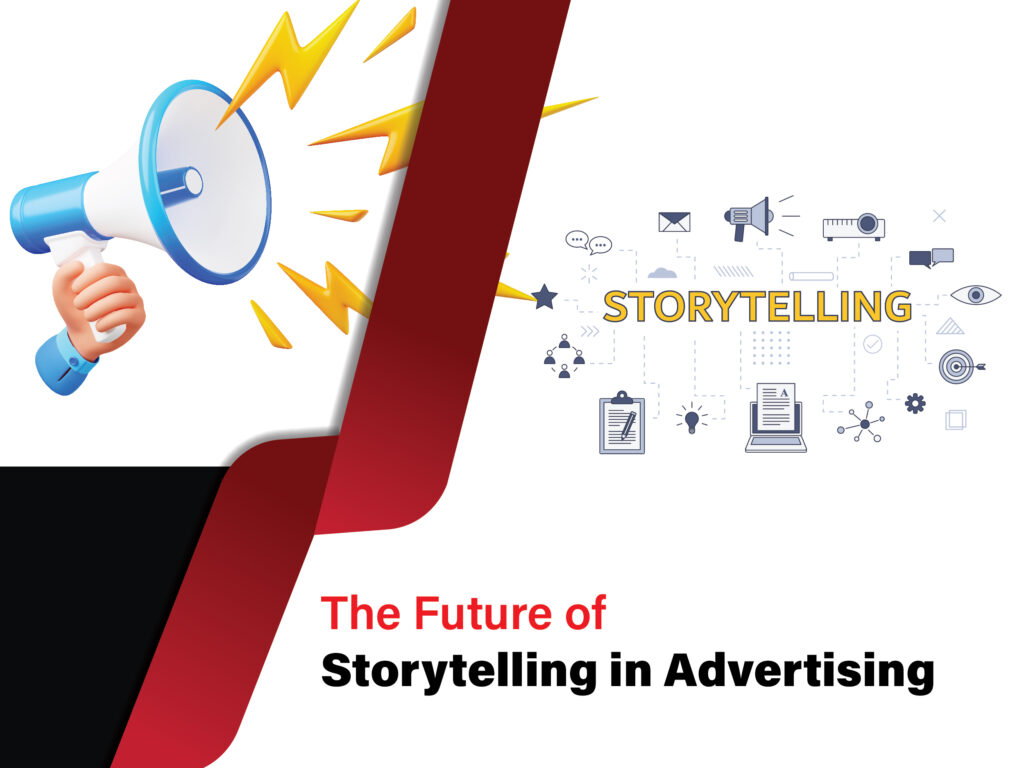
The future of storytelling in advertising is bright, and we can expect significant innovations in this field. Firstly, we can expect more immersive storytelling experiences, such as virtual reality and augmented reality, which can create a more interactive and engaging experience.
Secondly, we can expect more personalized storytelling, where advertisers leverage data analytics to create individualized content that resonates with each customer. This strategy aims to create a more personalized and relevant experience for customers, increasing their engagement with the brand.
Thirdly, we can expect more user-generated storytelling, where advertisers encourage customers to create content and share their stories. User-generated content is effective because it is authentic, relatable, and can reach a broader audience than traditional advertising.
Lastly, we can expect more emphasis on brand storytelling, where advertisers tell their brand’s origin story, values, and mission. Brand storytelling is an effective way of creating an emotional connection with the audience and building brand equity.
Conclusion
Storytelling is the future of advertising. Consumers are more interested in brands that create content that’s relatable, engaging, and memorable. Storytelling allows brands to connect with their audience on an emotional level, which results in increased brand loyalty and sales.
To incorporate storytelling into your advertising strategy, focus on developing narratives that are relatable, enjoyable, and inspiring. Use humor, dramatic tension, and even empathy to connect with your audience and create a lasting impression. Remember, the goal is to create an emotional connection that goes beyond selling a product or service. With storytelling, it all starts with a great story!



